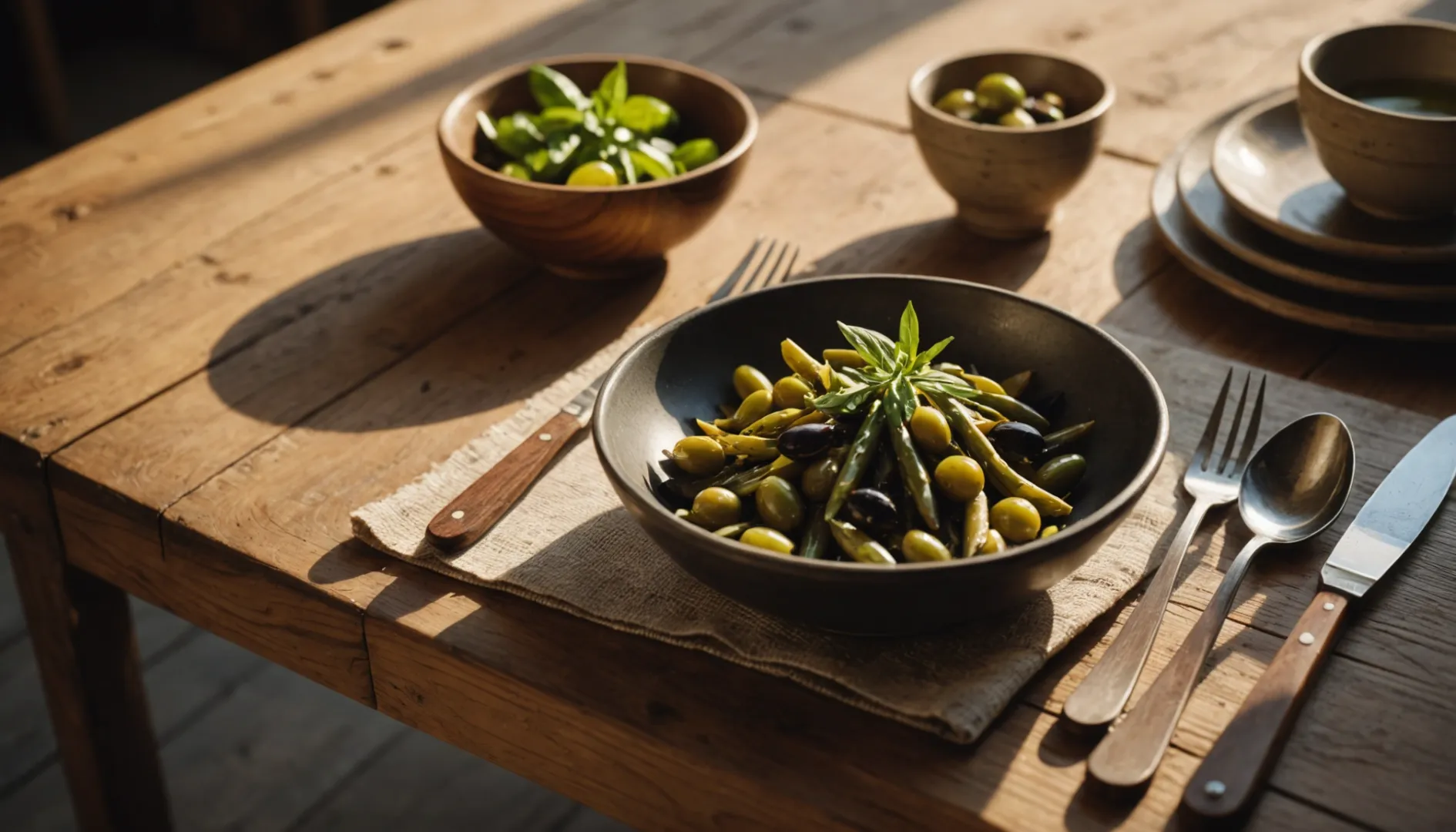
The choice between wooden and bamboo cutlery can feel like navigating a maze of eco-friendly promises.
Both disposable wooden and bamboo cutlery present eco-friendly alternatives to plastic. Wooden cutlery is biodegradable, crafted from responsibly sourced wood, while bamboo cutlery offers rapid regrowth and sustainability. Your choice hinges on environmental priorities like carbon footprint, durability, and sourcing practices.
Both wooden and bamboo cutlery have compelling eco-friendly credentials, but understanding their full lifecycle is key. I remember when I first tried to decide between the two. I was at a local farmers' market, overwhelmed by options, each claiming to save the planet one fork at a time. But as I dug deeper, I learned it wasn't just about biodegradability. It was about how these materials were sourced, their durability in my hectic kitchen, and even the carbon footprint they left behind.
Diving into these nuances can help us make an informed decision that aligns with our environmental values.
Wooden cutlery absorbs more moisture than plastic utensils.True
Wood is porous, absorbing moisture, unlike non-porous plastic.
Bamboo cutlery regenerates slower than wooden cutlery.False
Bamboo grows faster and is more sustainable than wood.
What Are the Key Environmental Benefits of Wooden Cutlery?
Imagine a world where every meal contributes to a healthier planet, starting with your choice of cutlery.
Wooden cutlery is a sustainable choice because it’s biodegradable, made from renewable resources, and has a lower carbon footprint than plastic. These utensils decompose naturally, involve minimal production energy, and support reducing waste and pollution, offering an eco-friendly dining solution.
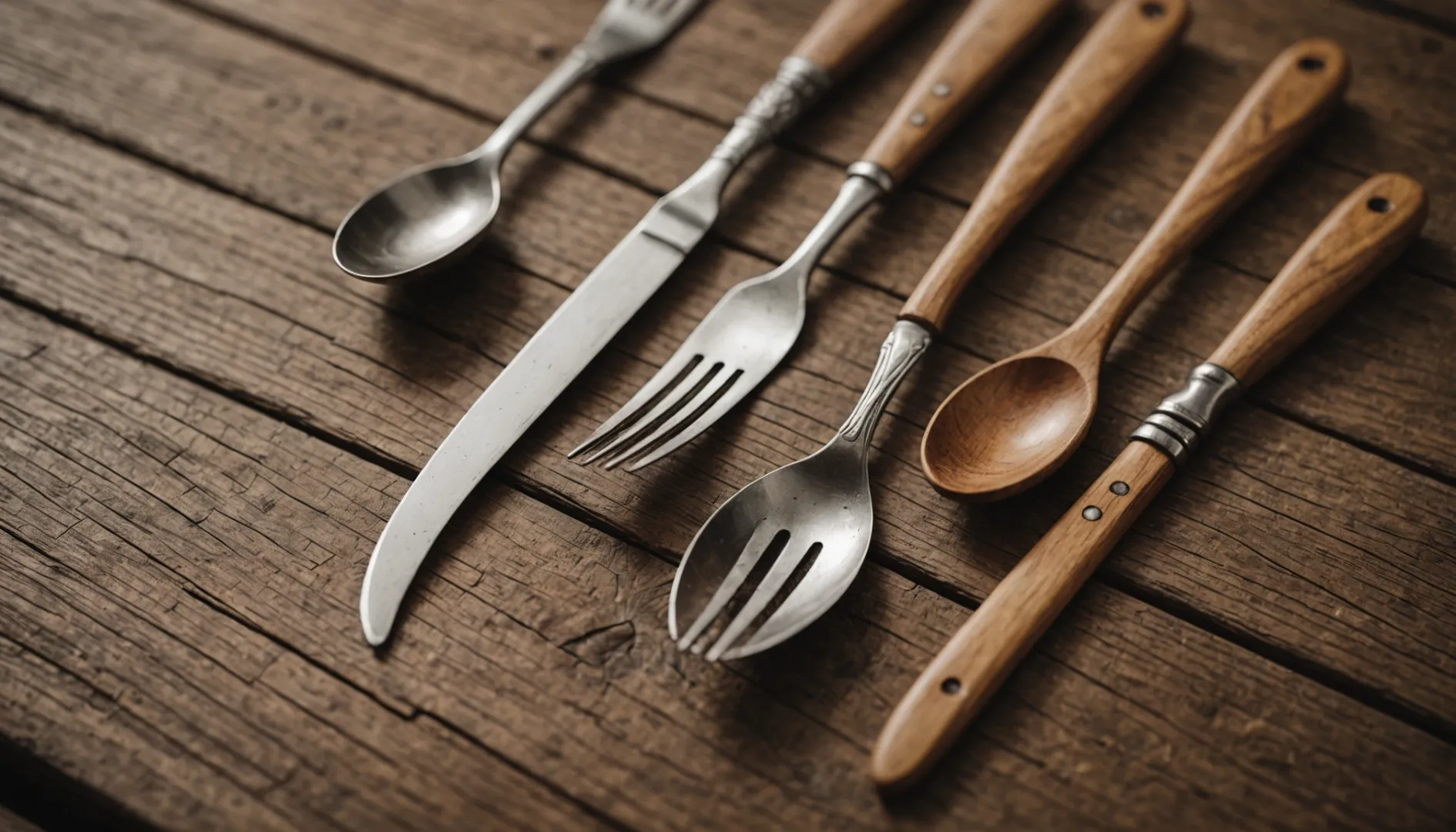
Biodegradability and Compostability
I remember the first time I learned about how long plastic takes to decompose—it was shocking. But when I discovered wooden cutlery, it felt like finding a simple yet impactful solution to this problem. Unlike those pesky plastics that linger for centuries, wooden cutlery can return to the earth naturally and quickly. Tossing it into the compost turns it into nutrient-rich soil, which my garden loves. Knowing that I’m helping reduce landfill waste makes every meal feel like a tiny victory for the planet.
Moreover, many types of wooden cutlery are compostable1, turning into nutrient-rich soil that supports plant growth. This characteristic makes them an excellent choice for reducing landfill waste.
Renewable and Sustainable Resources
When I first started searching for eco-friendly options, I stumbled across wooden cutlery made from responsibly harvested wood. It's such a relief to know that many manufacturers are committed to sustainable forestry practices. When I see the Forest Stewardship Council (FSC) label on a product, I feel assured that I’m supporting efforts that protect our forests for future generations.
Wooden cutlery is made from renewable resources like wood, which can be sustainably harvested. Many manufacturers adhere to responsible forestry practices, ensuring that the wood is sourced from forests managed to preserve biodiversity and ecological balance. Certifications such as the Forest Stewardship Council (FSC) label confirm sustainable sourcing. By choosing wooden cutlery with these certifications, consumers support sustainable forestry2 efforts.
Reduced Carbon Footprint
The impact of our choices can be profound. Wooden cutlery typically requires less energy to produce than plastic since it doesn’t rely on fossil fuels. Plus, trees are like nature’s air purifiers; they absorb carbon dioxide as they grow, which helps offset emissions.
The production of wooden cutlery typically involves less energy consumption compared to plastic. The manufacturing process does not rely on fossil fuels, which are a significant contributor to greenhouse gas emissions.
Every time I opt for wooden over plastic utensils, it feels like a step toward lowering my carbon footprint—a small but meaningful contribution to tackling climate change.
Absence of Harmful Chemicals
One thing I’ve always been wary of is the harmful chemicals in plastics. When heated, plastic can leach toxins into food, which is downright scary! Wooden cutlery doesn’t have this issue.
Wooden utensils do not release any toxic substances, making them a safer choice for both human health and environmental well-being.
By choosing products with natural coatings3, I ensure they stay food-safe and durable even when dealing with moisture.
Supporting Eco-friendly Innovations
The world of wooden cutlery is evolving with exciting innovations. Some companies are enhancing biodegradability with compostable coatings or mixing wood with bamboo fibers for added strength.
These advancements make wooden cutlery not only practical but also a testament to resource efficiency.
Embracing these changes feels like being part of a movement that’s reshaping our approach to sustainability.
These innovations not only enhance usability but also contribute to resource efficiency4.
By appreciating these environmental benefits, I can make choices that reflect my commitment to a sustainable lifestyle. Each decision to use wooden cutlery is a step towards supporting environmental stewardship and promoting a healthier planet.
Wooden cutlery is more hygienic than plastic.False
Wooden cutlery can harbor bacteria if not properly maintained.
Bamboo cutlery is more sustainable than wooden cutlery.True
Bamboo grows faster and is easier to harvest, enhancing sustainability.
Why is bamboo cutlery considered sustainable?
Ever wondered if bamboo cutlery is the ultimate eco-friendly choice? Let's dive into its sustainability benefits and see how it stacks up.
Bamboo cutlery is incredibly sustainable because it grows quickly, requires few resources, and is biodegradable. Unlike traditional wood or plastic utensils, bamboo thrives without needing pesticides or fertilizers, making it a top pick for eco-conscious individuals like myself.
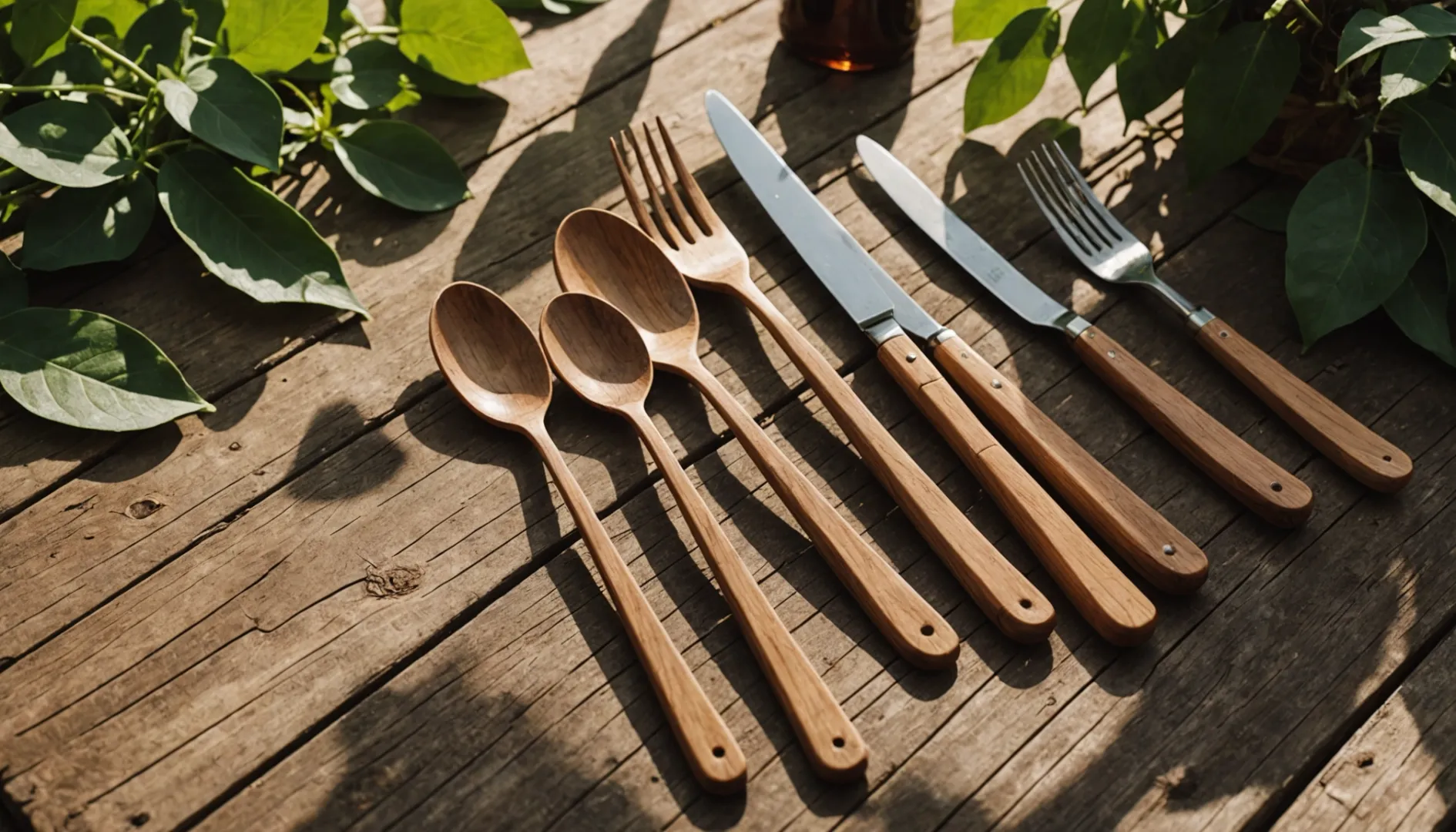
The Rapid Growth Advantage of Bamboo
I remember the first time I saw a bamboo grove on a trip to Asia; it was like watching nature's skyscrapers rise overnight. Bamboo can grow an astonishing 91 cm (35 inches) in just one day! This rapid growth means it doesn't need replanting after harvesting, making it an excellent renewable resource5. Imagine having a garden where you could harvest every day without worrying about depleting your plants.
Minimal Resource Requirements
When I think about all the water and chemicals that go into growing conventional crops, bamboo stands out as a superstar. It needs very little water and no chemical help to flourish. This means bamboo's environmental impact is much lower than traditional wood or plastic cutlery, which often demands heavy irrigation and potentially harmful treatments.
Biodegradability and Lifecycle
A few months ago, I swapped out my kitchen utensils for bamboo ones, and what struck me was their natural lifecycle. Unlike plastic utensils that could outlast me in a landfill, bamboo breaks down naturally in just a few months under the right conditions. According to Life Cycle Analysis6, bamboo's carbon footprint is far lower than non-biodegradable options, which made me feel like I was doing something good for the planet.
Comparisons with Other Materials
In my search for sustainable alternatives, I found bamboo to be a clear winner over metal or plastic. Metal cutlery, while reusable, requires significant energy to produce and involves invasive mining practices. Plastic, we all know, is notorious for its stubbornness in landfills and reliance on fossil fuels. Even wooden cutlery can't match bamboo's fast renewability and ease of cultivation.
Bamboo's natural strength and resistance to warping or splintering make it a favorite in my home. Choosing bamboo isn't just about sustainability; it's about making practical, environmentally responsible choices that last.
Wooden cutlery absorbs moisture easily.True
Wood's porous nature allows it to absorb moisture, risking bacterial growth.
Bamboo cutlery has a higher environmental impact than wood.False
Bamboo grows faster and is easier to harvest, making it more sustainable.
How Do Durability and Hygiene Impact Your Cutlery Choices?
Have you ever wondered why choosing the right cutlery can feel like a balancing act between durability and hygiene?
Cutlery durability and hygiene hinge on material quality, care, and use. Wooden utensils need regular oiling, plastic requires cautious handling to avoid toxins, and metal offers longevity but needs maintenance. Understanding these factors ensures safe, long-lasting use of your cutlery.
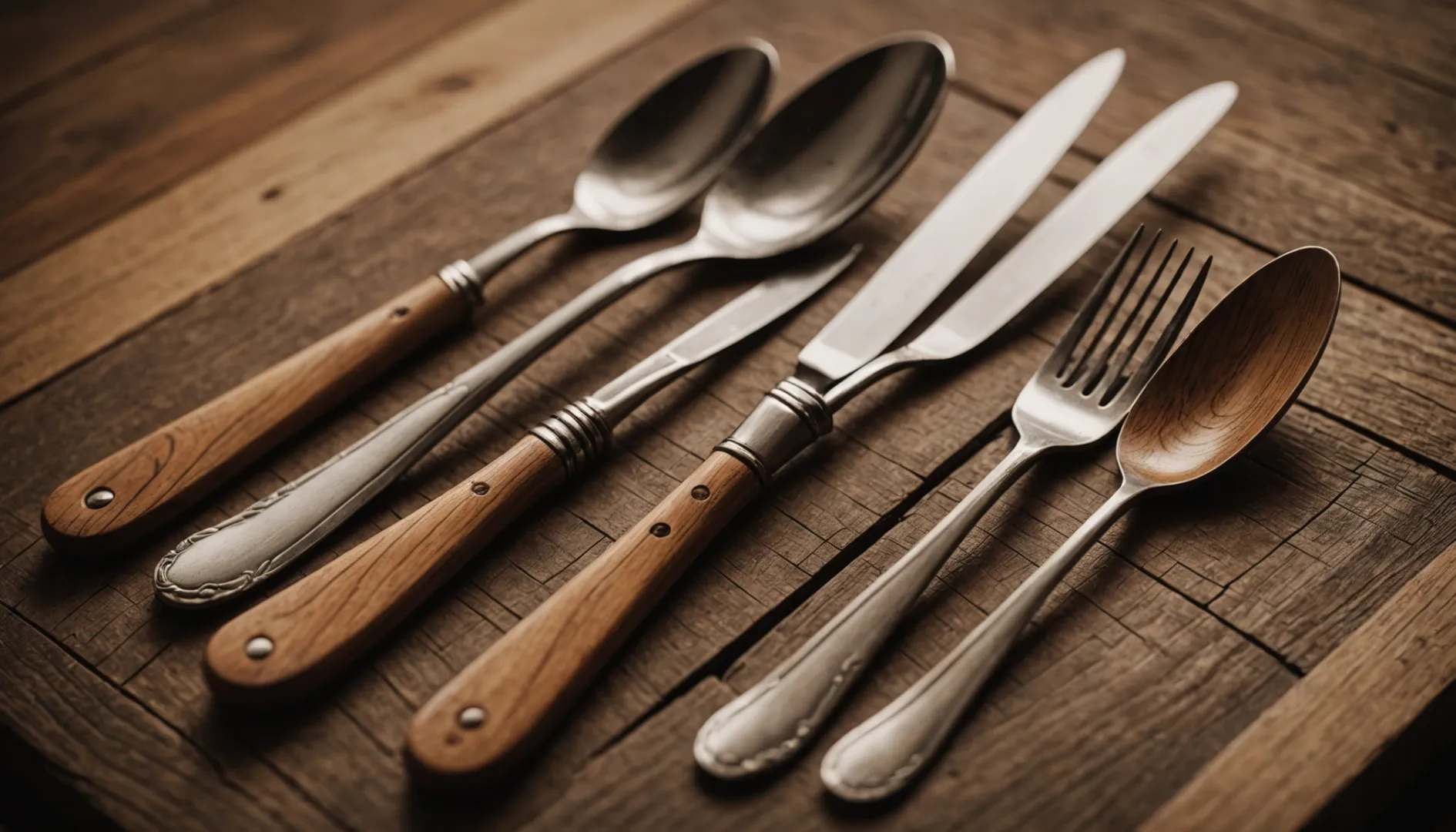
Wooden Cutlery: Sustainability and Care
I remember the first time I switched to wooden cutlery because it felt like a small yet impactful eco-friendly choice. But it came with its quirks. Wood is naturally porous, meaning it can absorb moisture and harbor bacteria if not properly maintained7. To keep my wooden spoons and forks in top shape, I found that regular oiling with food-safe oils was key. This not only prevented cracking and warping but also kept them looking fresh and vibrant. However, I learned the hard way to keep them away from the dishwasher, as excessive moisture or heat can be their downfall.
Plastic Cutlery: Convenience vs. Health Risks
Plastic cutlery was a staple during my college years due to its sheer convenience. However, over time, I became more aware of the health and environmental implications. High-quality plastics are less prone to breaking but can release toxins when heated, which made me cautious about using them with hot meals. Opting for BPA-free options was a game-changer, though it's crucial to dispose of plastic cutlery responsibly to minimize environmental impact8.
Metal Cutlery: The Long-lasting Choice
Investing in metal cutlery felt like a rite of passage into adulthood for me. Stainless steel, with its durability, became my go-to for both daily meals and special occasions. The trick lies in maintaining its shine—regular polishing helps prevent tarnishing and keeps them looking elegant. Storing them in a dry place and avoiding abrasive cleaners became part of my routine to ensure they last for years.
Environmental Impact and Material Considerations
Understanding the environmental footprint of each material was eye-opening. Wooden cutlery, biodegradable and often compostable, stood out as an eco-friendly choice if sourced responsibly from managed forests. Meanwhile, plastic cutlery's contribution to landfill waste made me rethink my choices. Metal's reusability was a plus despite its energy-intensive production process; thus evaluating these factors helps me make decisions that align with my values of sustainability and practicality.
Wooden cutlery is more hygienic than plastic.False
Wood is porous and can absorb bacteria, requiring proper care.
Wooden cutlery requires regular oiling to maintain quality.True
Oiling prevents cracking and maintains moisture resistance.
How Do Production and Disposal Impact Their Eco-Friendliness?
Ever wonder how the stuff we buy impacts the planet? Let's dive into how the making and breaking down of products play a role in their eco-friendliness.
The eco-friendliness of a product is deeply influenced by its production and disposal processes. Eco-friendly manufacturing and proper waste management are vital in reducing environmental harm.
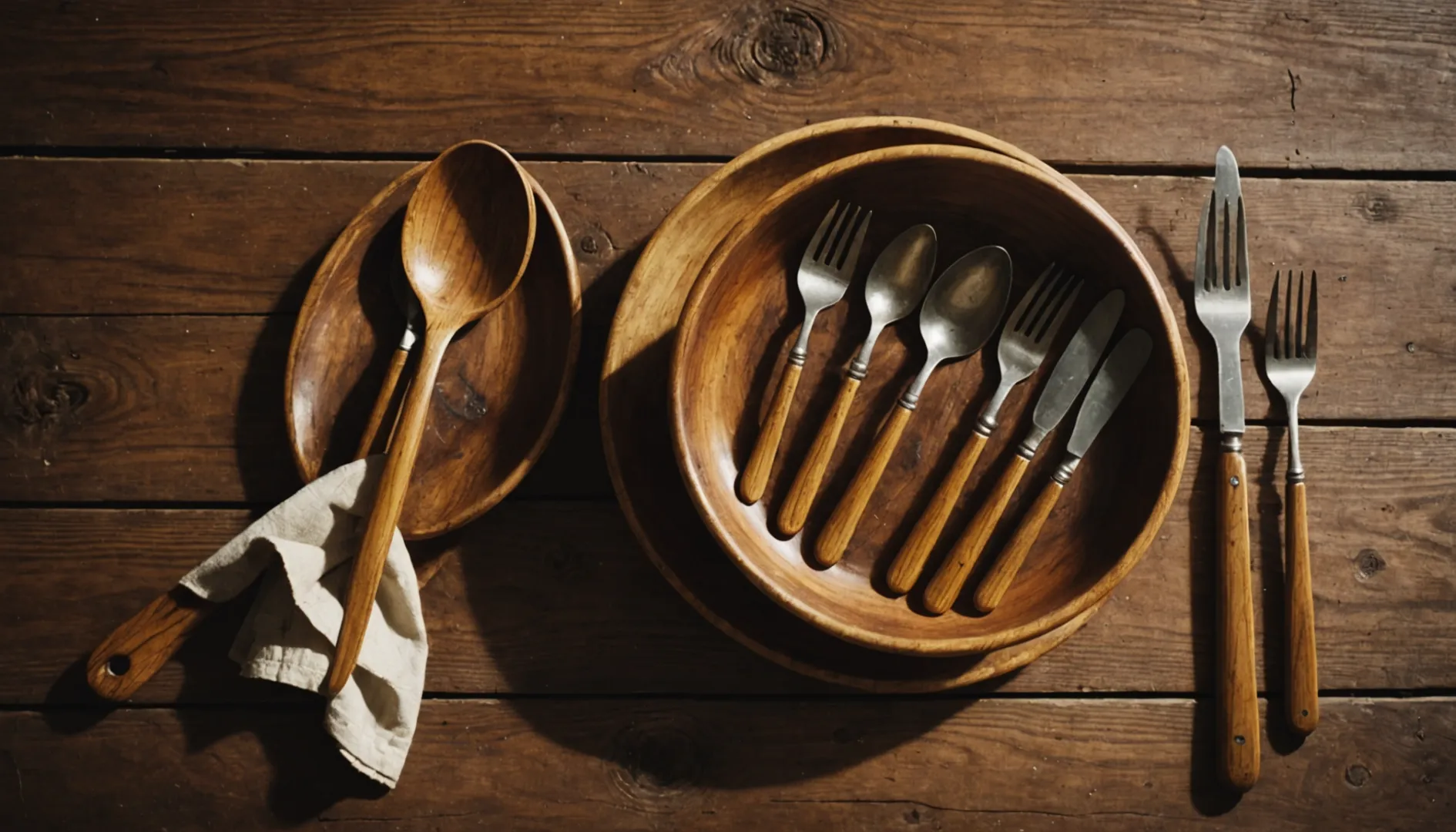
The Production Stage: A Critical Examination
When I think about how products are made, it reminds me of baking a cake. Just as choosing the right ingredients is crucial for a delicious cake, selecting sustainable raw materials is essential for eco-friendly production. Take wooden cutlery, for example. Using sustainably harvested wood9 means we're not just hacking away at forests but actually promoting biodiversity.
Then there's the energy aspect—kind of like deciding whether to bake with an electric oven or go solar. Companies that tap into renewable energy not only shrink their carbon footprint but also save money in the long run. It's a win-win for both Mother Earth and our wallets!
Disposal and Its Environmental Repercussions
I've often wondered what happens to things after we throw them away. It turns out, disposal can make or break a product's green status. Biodegradable items like wooden cutlery naturally decompose, turning back into earth rather than piling up in landfills. But this only works if they end up in the right place—like local composting facilities that handle waste responsibly.
In contrast, chucking stuff into landfills is like burying our heads in the sand. It just sits there, polluting and emitting gases. So, it's on us—and the companies—to ensure products are disposed of properly. Some brands are even using blockchain technology10 to track their product’s journey, ensuring they don’t end up polluting our planet.
The Role of Consumer Behavior
It's easy to forget that our choices have power. By opting for products with eco-certifications, we're casting votes for sustainability with our wallets. Plus, knowing how to dispose of these products correctly can really maximize their benefits. For instance, wooden cutlery is often compostable—tossing it in the trash misses the point entirely!
Brands can help by educating us about sustainable practices. I find stories about where products come from and how they're made super compelling—they really help me make informed choices. By raising awareness, we can become part of a larger movement toward environmental consciousness, changing how we interact with the world around us.
Wooden cutlery requires regular oiling to prevent cracking.True
Regular oiling maintains moisture resistance and structural integrity.
Wooden cutlery is more heat-resistant than metal utensils.False
Wooden cutlery is less heat-resistant than metal, which withstands high temperatures.
Conclusion
This article compares disposable wooden and bamboo cutlery, highlighting their environmental benefits, biodegradability, sourcing practices, and maintenance needs to help consumers make informed eco-friendly choices.
-
Discover how wooden cutlery supports eco-friendly waste management. ↩
-
Learn how sustainable forestry helps preserve natural habitats. ↩
-
Understand how natural coatings improve safety and durability. ↩
-
Explore advancements in making wooden cutlery more sustainable. ↩
-
Discover the impressive growth rate of bamboo versus traditional trees. ↩
-
Learn how bamboo's lifecycle impacts its environmental footprint. ↩
-
Learn tips for keeping wooden utensils durable and hygienic. ↩
-
Understand potential health concerns with plastic utensils. ↩
-
Learn how sustainably sourced wood minimizes environmental impact. ↩
-
Discover how blockchain ensures responsible product disposal. ↩

